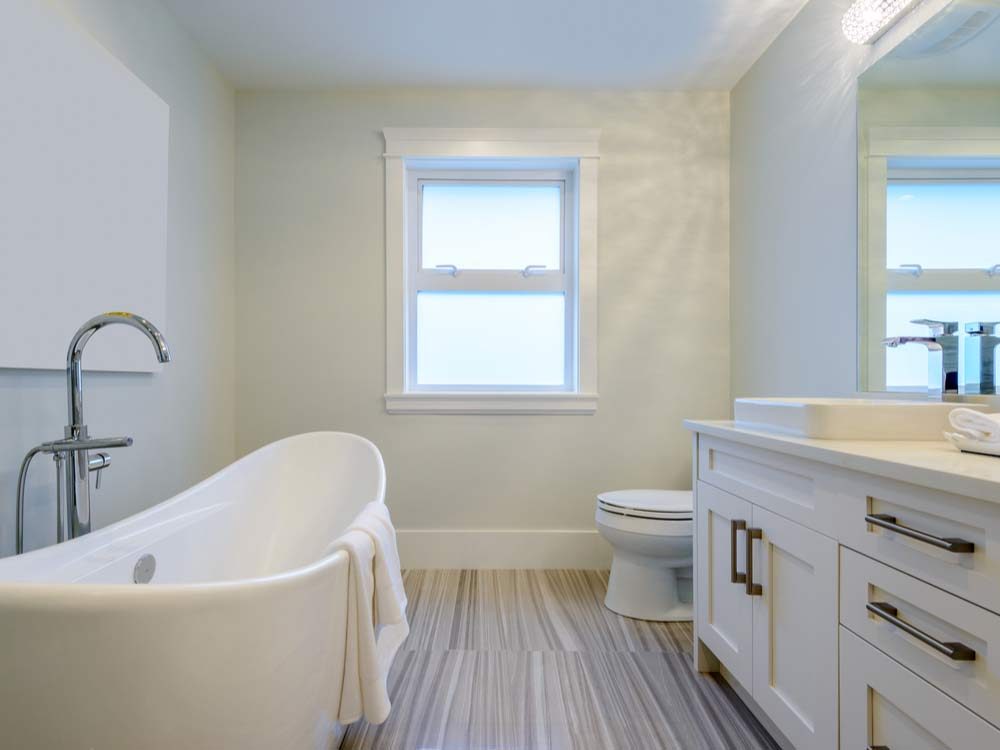Making This Mistake with a Clogged Toilet Can Make Things Worse
Tackle the problem of a clogged toilet head-on with this secret cleaner.

Are you making this clogged toilet mistake?
Drain cleaners are readily available over the counter. They’re what some prefer as an inexpensive solution versus the cost of a licensed plumber. While both reasons may seem like a good idea, these products rarely work as promised, and one thing is for sure: these caustic chemical-ladened products can cause damage to your pipes. In addition, many consumers have suffered burns to their eyes and skin when they do not follow the instructions properly. (Here are 30 home improvement hacks you’ll wish you knew sooner.)
The easiest way to remove kitchen and bath sink clogs is to use a snake or a barbed drain cleaning tool. Or, simply remove the P-trap and pour out the clog. But too many DIYers reach for the liquid drain cleaner first and they pour in way more than the recommended amount. That’s a mistake because liquid drain cleaner isn’t the best choice and more certainly isn’t better. In fact, liquid drain cleaner can create more problems than it solves. Here’s why:
- If the liquid cleaner doesn’t clear the clog, you or your plumber will probably have to remove the trap arm later on and it’ll be filled with caustic corrosive drain cleaner. Won’t that be fun?
- Using too much drain cleaner, or using it too often, can damage metal traps and pipes, causing leaks.
- Liquid drain cleaner destroys the rubber gasket used in “mission” style couplings. If you have any of those couplings in your drain lines and you use liquid drain cleaners, you’ll damage them, causing leaks in the future.
No liquid drain cleaner should ever be used in rubber pipes or pipes that have been repaired with rubber couplers. (Don’t miss these signs you’re about to hire a bad contractor.)
Instead you can try a bacterial drain cleaner. Sounds scary but it’s not. Whether it’s hair, grease or food, some sort of organic matter causes most drain clogs. Fortunately, there’s a type of bacteria that breaks down organic matter in your drains. Add the bacteria to your drains and it will consume organic matter which helps prevent clogs. You can buy drain-cleaning bacteria in granular or liquid form.
Bacterial drain cleaner is noncorrosive so it won’t harm pipes, and the bacteria won’t interfere with the bacteria in your septic system. Follow the instructions on the package. Add the bacteria when drains won’t be used, like right before everybody goes to bed, to allow it time to work. Drain and trap cleaner is available at home centres and hardware stores. A package should last several months, depending on how many drains you treat.
Next, check out these six bathroom renovation tips from the experts.



